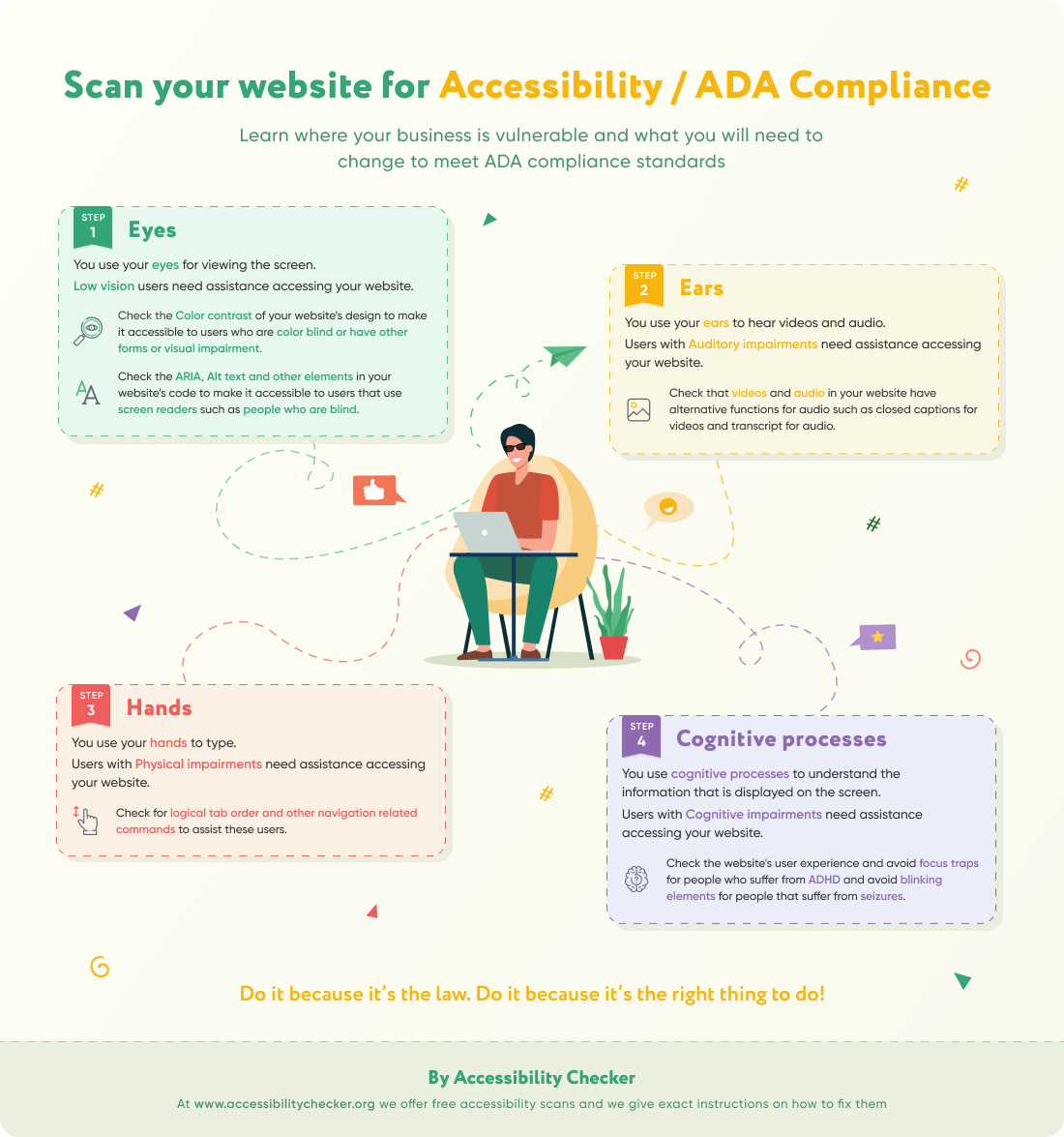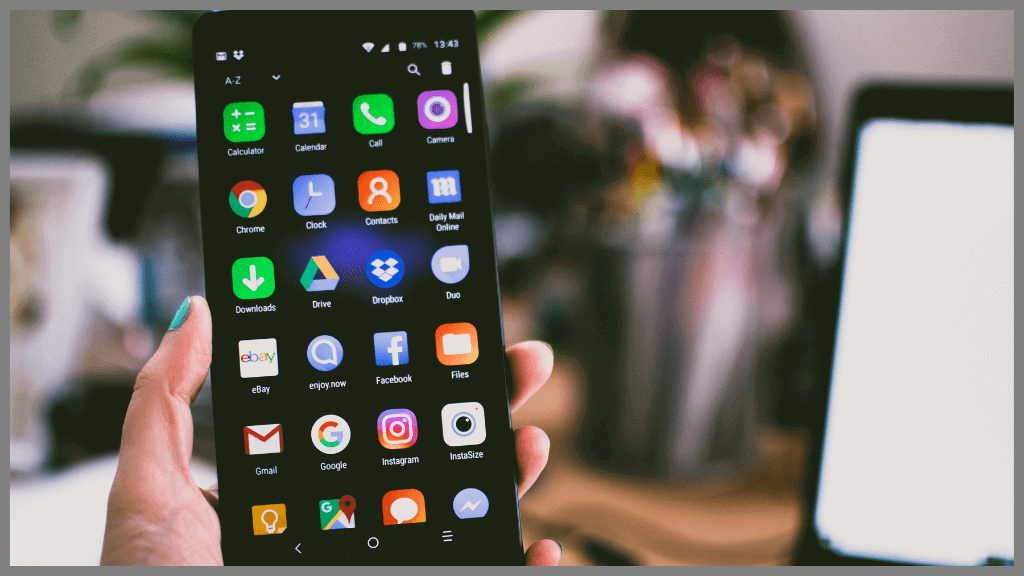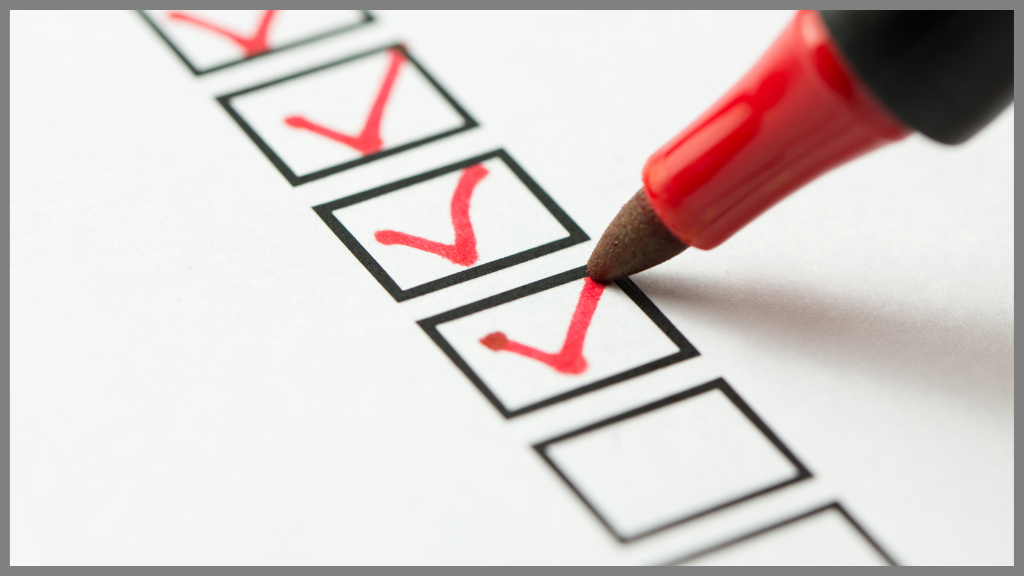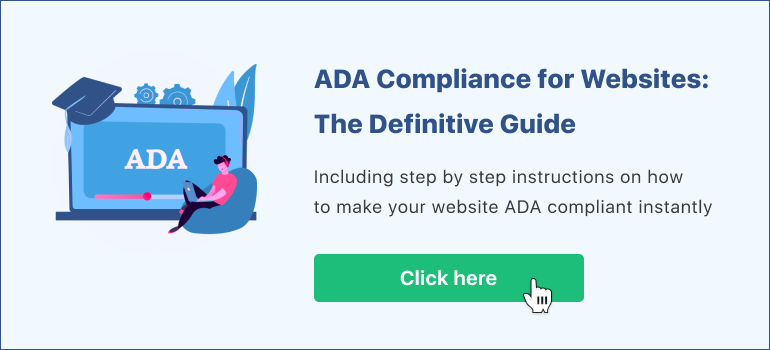Steps for Achieving Mobile App ADA Compliance
If you have a business, you only want the best experience for your customers. Of course, this includes giving them an accessible app.
With 6.4 billion smartphone users globally, smartphone usage is more than 80%. Data from July 2021 also show that 56.75% of web traffic comes from mobile phones.
With this increased usage of mobile phones, brands have had to create mobile apps to accompany their websites.
However, the answer to business growth and success is not merely having an app. If you have a brand, building an ADA-compliant mobile app should be a priority if you want to dominate your niche.
In today’s post, we are going to discuss ways to achieve mobile app ADA compliance.
To understand ADA compliance for a website, visit our guide below.
Understanding Mobile App ADA Compliance
Developers release nearly 100,000 Android and 30,000 iOS apps every month, with more than 200 billion downloads every year.
Of course, these apps should not only be user-friendly but accessible to everyone as well.
Mobile apps are generally covered by the same accessibility requirements that apply to non-mobile software and web applications. However, under which law depends on the nature of your business.
For example, Title III of the ADA applies to commercial businesses.
On the other hand, sections 504 and 508 and Title II of the ADA apply to governments, federally-funded schools and organizations, and municipalities. Additionally, these legislations also apply to entities that sell digital products to these organizations.
Section 508
Section 508 of the Rehabilitation Act of 1973 applies to federally procured apps. Under Section 508, other technical and functional requirements apply, including:
- Section 1194.21: Software Applications and Operating Systems
- Section 1194.22: Web-based Intranet and Internet Information and Applications
- Section 1194.31: Functional Performance Criteria

Americans with Disabilities Act (ADA)
The ADA doesn’t explicitly include websites. However, courts have expressed their belief that websites should be considered places of public accommodation.
It means that public and private organizations covered by the ADA will need to make their apps accessible.
WCAG Guidelines for Apps
Since there are no specific mobile app accessibility standards, brands and businesses adhere to the WCAG guidelines for accessibility. If you have a mobile app, here are some key requirements from the WCAG:
- Structured content flow
- Large buttons
- Additional padding and white space
- Larger font size
- Proper color contrast
Twenty-First Century Communications and Video Accessibility Act (CVAA)
The Twenty-First Century Communications and Video Accessibility Act (CVAA) updates federal communications law to create a modern, integrated environment for persons with disabilities.
It was enacted in 2010 to ensure that civil rights laws are kept up to date with 21st-century technologies. These include digital, broadband, and mobile innovations.
Additionally, the CVAA requires that mobile web browsers must be accessible to the visually impaired. While there are no specific mobile app accessibility standards, mobile web browsing should be functionally accessible.
In today’s terms, media players include mobile web browsers, so they must also support captioning and audio descriptions.
Aside from these, the CVAA also covers other communication systems apps, including:
- Text messaging and SMS
- Instant messaging
- Real-time communication apps
- Video conferencing apps
The Importance of Mobile App Accessibility
Mobile accessibility refers to creating accessible websites and applications for people with disabilities. Other than mobile phones, content could be delivered across devices such as:
- Smart televisions
- Connected vehicles (Android Auto)
- Wearable devices
- Seatback screens
- Smart home technology
With all these devices, users have many different ways to interact with content, so accessibility is increasingly important.
Additionally, apps that come with the device out of the box give brands more options to personalize their experiences. Thus, an inaccessible experience may be magnified and have negative implications.
Estimates also show that users spend 90% of their screen time on native apps. Thus, businesses need to address accessibility concerns with urgency.
How to Make Your Mobile Apps ADA Compliant
If your mobile app falls short of accessibility requirements, you could find yourself liable to legal penalties. Not only that, but you could lose customers if you give them an inaccessible experience.
So, how can you improve the accessibility and usability of your app? There are several ways that you can achieve this:
1) Audit your mobile apps for compliance.
Auditing your mobile app is the first step in accessibility. It helps you identify the accessibility issues on your app and implement the necessary solutions.
For this, you must conduct an audit regularly to keep up with the latest standards and regulations.
2) Provide an accessibility statement.
An accessibility statement expresses your intentions to make your digital assets accessible to everyone. It also shows that you care about your users and are committed to your social responsibility.
If you’re unsure of what to include in your accessibility statement, this accessibility statement generator from Accessibility Checker can help.
3) Check for main accessibility factors.
If you want to build an ADA-compliant mobile app, there are many requirements that you have to adhere to. In terms of accessibility, here are some elements you should keep in mind:
- Color Compliance
The color blind can have a tough time viewing color on a computer screen. Thus, your app should have an alternative that they can use to view colors.
- Multimedia Transcript
Many apps come with audio and video files, but sometimes, a disabled person can’t access them. That said, your app should provide a solution that makes it possible for disabled users to view and hear multimedia content.
- Easy-to-Understand Error Messages
When disabled users submit forms, errors are likely to happen. This is why error messages need to be understandable and accessible to help differently-abled users understand what went wrong.

4) Use accessibility technologies to make an app accessible.
Aside from what we’ve mentioned, you can use other accessibility features to help you take advantage of Apple and Android platforms. These include text-to-speech, haptic feedback, and gesture technologies.
Visually impaired people use Talkback and Voiceover, the two most popular accessibility features on Android and iOS. They can be used to enhance the app’s user experience in different ways.
6-Step Checklist for Mobile App ADA Compliance
If you have a mobile app, this checklist is for you.
1) Design for different screen sizes
While designing your mobile app, you need to account for a custom aspect ratio to fit most of your components on a small screen.
Because a smaller screen limits content, you should minimize information on each page of your app. Additionally, your default size for content and controls should be reasonable.
2) Touch targets and placements
The higher resolution of mobile devices can display multiple interactive elements together on a small screen. However, these elements should be large enough and have enough space between them.
Your app’s tap targets should have appropriate sizes so people can interact with precision and confidence.
3) Simple device gestures and ample feedback
Users operate most mobile devices through touchscreen gestures, which can be simple or complex.
Given this, users should be able to control your app using simple gestures, as complex ones can be difficult for people with motor impairments.
You should also design an app that allows users to easily go back and rectify accidental actions.
4) Consistent layouts and templates
Consistency is key to creating a smooth cross-platform user experience. So, if you’re looking to present your content across multiple pages in a mobile application, use consistent layouts.
For example, your app’s elements should be in the same order even when presented on a different device.
5) Easy data entry
There are multiple ways to enter data on a mobile device, including an on-screen keyboard and speech.
Some users might find it difficult to type text, but you can provide solutions that displace this through other data entry methods. You can quickly provide menu options, radio buttons, checkboxes, or autofill information on your app.
6) Proper color contrast
The WCAG provides general color contrast ratios that are acceptable for most users. However, you should pay extra attention to mobile devices and applications because they’re most likely used outdoors.
Good contrast can help users access your content even when the sun’s glare affects the screen.

Summary
With the world’s increasing usage of mobile devices, you mustn’t exclude mobile apps from your accessibility efforts. There are many ways to build an accessible app, including those that we’ve mentioned above.
Liked this post? Find more helpful resources by reading our articles below!




